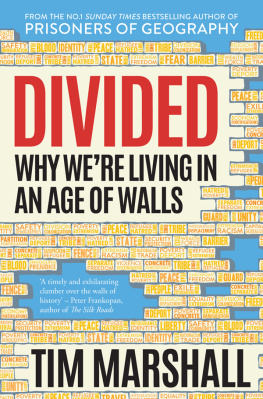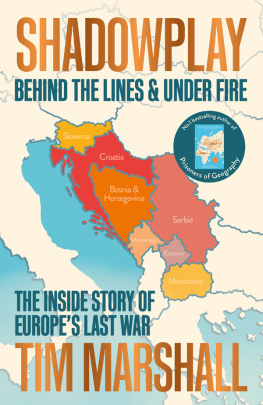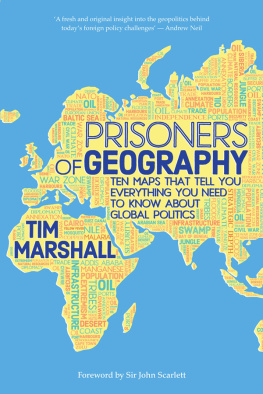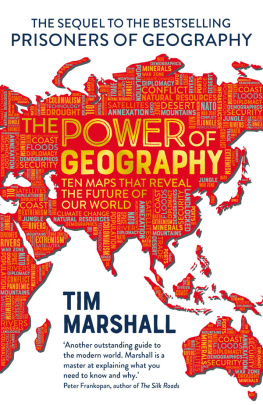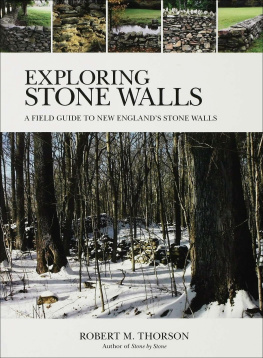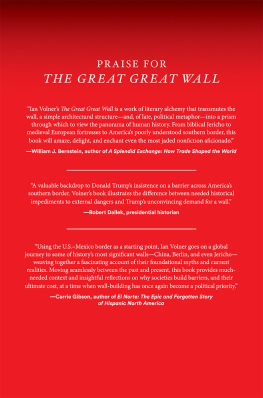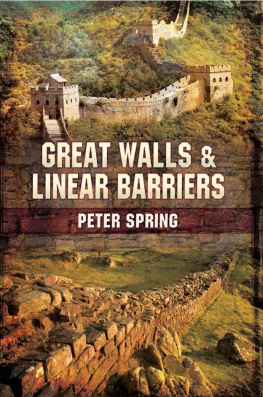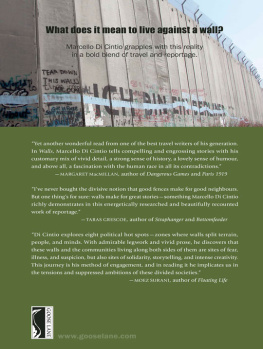Thank you for downloading this Simon & Schuster ebook.
Get a FREE ebook when you join our mailing list. Plus, get updates on new releases, deals, recommended reads, and more from Simon & Schuster. Click below to sign up and see terms and conditions.
CLICK HERE TO SIGN UP
Already a subscriber? Provide your email again so we can register this ebook and send you more of what you like to read. You will continue to receive exclusive offers in your inbox.
We hope you enjoyed reading this Simon & Schuster ebook.
Get a FREE ebook when you join our mailing list. Plus, get updates on new releases, deals, recommended reads, and more from Simon & Schuster. Click below to sign up and see terms and conditions.
CLICK HERE TO SIGN UP
Already a subscriber? Provide your email again so we can register this ebook and send you more of what you like to read. You will continue to receive exclusive offers in your inbox.
ALSO IN TIM MARSHALLS POLITICS OF PLACE SERIES
A Flag Worth Dying For:
The Power and Politics of National Symbols
Prisoners of Geography:
Ten Maps That Explain Everything About the World

Scribner
An Imprint of Simon & Schuster, Inc.
1230 Avenue of the Americas
New York, NY 10020
www.SimonandSchuster.com
Copyright 2018 by Tim Marshall
Originally published in Great Britain in 2018 by Elliott and Thompson Limited
Published by arrangement with Elliott and Thompson Limited
All rights reserved, including the right to reproduce this book or portions thereof in any form whatsoever. For information, address Scribner Subsidiary Rights Department, 1230 Avenue of the Americas, New York, NY 10020.
First Scribner hardcover edition October 2018
SCRIBNER and design are registered trademarks of The Gale Group, Inc., used under license by Simon & Schuster, Inc., the publisher of this work.
For information about special discounts for bulk purchases, please contact Simon & Schuster Special Sales at 1-866-506-1949 or .
The Simon & Schuster Speakers Bureau can bring authors to your live event. For more information or to book an event, contact the Simon & Schuster Speakers Bureau at 1-866-248-3049 or visit our website at www.simonspeakers.com.
Jacket design by David Litman
Jacket Photographs: Map Roripond/iStock/Getty Images; Barbed Wire Martin Barraud/Ojo Images/Getty Images; Fence Fredex8/iStock/Getty Images; Rusted Metal Tachit Choosringam/Eyeem/Getty Images; Bricks Charles Oc. Cecil/Age Fotostock/Getty Images
Library of Congress Cataloging-in-Publication Data is available.
ISBN 978-1-5011-8390-4
ISBN 978-1-5011-8392-8 (ebook)
Picture credits: 19: Epics/Hulton Archive/Getty Images.
Sources for maps: : BBC.
Maps: JP Map Graphics Ltd.
Dedicated to my mother, Margaret McDonald, and a life spent building bridges
Contents
Introduction
T he border wall between Israel and the West Bank is among the most forbidding and hostile in the world. Viewed from up close, whichever side you find yourself on, it rears up from the ground, overwhelming and dominating you. Faced by this blank expanse of steel and concrete, you are dwarfed not only by its size but by what it represents. You are on one side; they are on the other.
Thirty years ago a wall came down, ushering in what looked like a new era of openness and internationalism. In 1987 President Ronald Reagan went to the Brandenburg Gate in divided Berlin and called out to his opposite number in the Soviet Union, Mr. Gorbachevtear down this wall! Two years later it fell. Berlin, Germany, and then Europe were united once more. In those heady times, some intellectuals predicted an end of history. However, history does not end.
In recent years, the cry Tear down this wall is losing the argument against fortress mentality. It is struggling to be heard, unable to compete with the frightening heights of mass migration, the backlash against globalization, the resurgence of nationalism, the collapse of communism, and the 9/11 attacks and their aftermath. These are the fault lines that will shape our world for years to come.
We are seeing walls being built along borders everywhere. Despite globalization and advances in technology, we seem to be feeling more divided than ever. Thousands of miles of walls and fences have gone up around the world in the twenty-first century. At least sixty-five countries, more than a third of the worlds nation-states, have built barriers along their borders; half of those erected since World War II sprang up between 2000 and now. Within a few years the European nations could have more miles of walls, fences, and barriers on their borders than there were at the height of the Cold War. They began by separating Greece and Macedonia, Macedonia and Serbia, and Serbia and Hungary, and as we became less shocked by each stretch of barbed wire, others followed suitSlovenia began building on the Croatian border, the Austrians fenced off Slovenia, and Sweden put up barriers to prevent illegal immigrants crossing from Denmark, while Estonia, Latvia, and Lithuania have all started on defensive fortifications on their borders with Russia.
Europe is certainly not alone. The UAE has built a fence along its border with Oman, Kuwait likewise with Iraq. Iraq and Iran maintain a physical divide, as do Iran and Pakistanall 435 miles of it. In Central Asia, Uzbekistan, despite being landlocked, has closed itself off from its five neighbors: Afghanistan, Tajikistan, Kazakhstan, Turkmenistan, and Kyrgyzstan. The border with Tajikistan is even mined. And on the story goes, through the barriers separating Brunei and Malaysia, Malaysia and Thailand, Pakistan and India, India and Bangladesh, China and North Korea, North and South Korea, and so on around the world.
We erect walls for many reasons because we are divided in many waysin wealth, race, religion, and politics. Sometimes divisions lead to violence, and walls are erected to protect or defend. Sometimes walls go up to keep certain people out. Sometimes physical walls dont go up at all, but we still feel the separation; its in our minds. These invisible barriers are often just as effective.
These walls tell us much about international politics, but the anxieties they represent transcend the nation-state boundaries on which they sit. The primary purpose of the walls appearing throughout Europe is to stop the wave of migrantsbut they also say much about wider divisions and instability in the structure of the European Union and within its member nations. President Trumps proposed wall along the US-Mexico border is intended to stem the flow of migrants from the south, but it also taps into a wider fear many of its supporters feel about changing demographics.
Division shapes politics at every levelthe personal, local, national, and international. Its essential to be aware of what has divided us, and what continues to do so, in order to understand whats going on in the world today.
* * *
Picture the beginning of Stanley Kubricks 1968 sci-fi masterpiece, 2001: A Space Odyssey , the sequence titled The Dawn of Man. On the African savanna in the prehistoric era, a small tribe of proto-man/apes are drinking peacefully at a watering hole when another tribe turns up. The individuals are quite happy to share with their own groupbut not with this new, other tribe. A shrieking match ensues in which the new group succeeds in taking over the watering hole, forcing the others to retreat. At this point, if the newcomers had had the nous to make a few bricks and mix some cement, they could have walled off their new possession and guarded it. But given that this is set a few million years ago, they have to fight it out again when the first tribe returns some days later, having boned up on warfare, to reclaim its territory.
Next page

